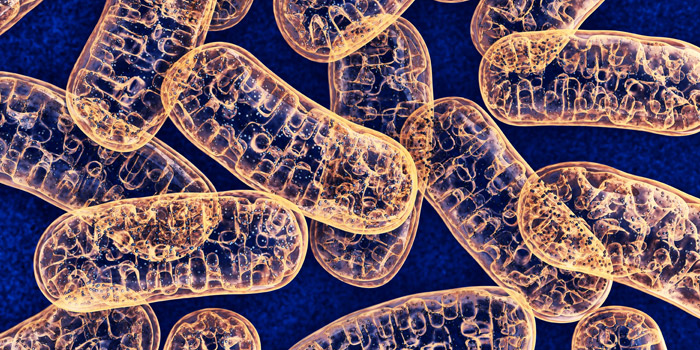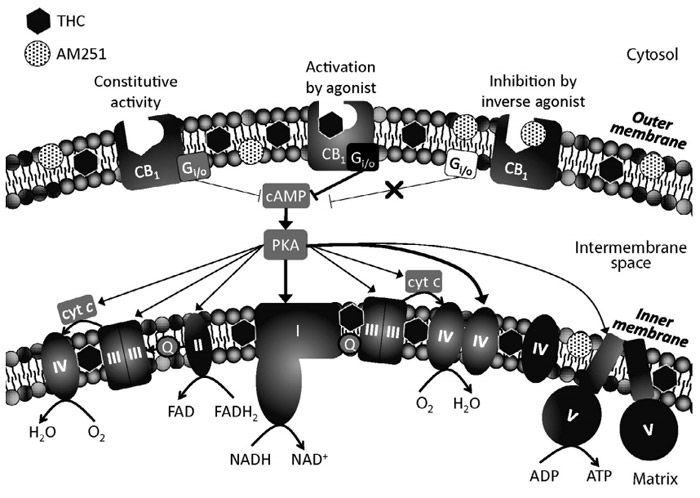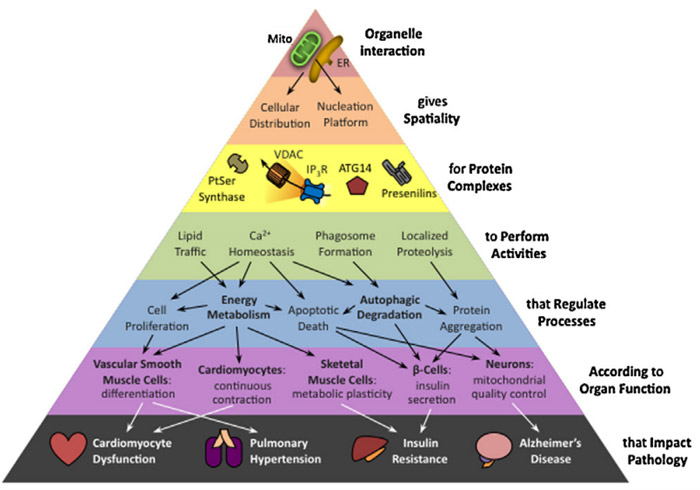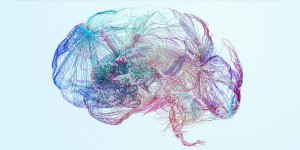By Tanja Bagar

Dr. Tanja Bagar is a microbiologist with a PhD in Biomedicine. She has gained extensive research experience in biotechnology, molecular biology and cell signaling in laboratories in Slovenia, Germany and the UK. Her focus has mainly been on the endocannabinoid system and active substances from cannabis/hemp. Her work led to the formation of the International Institute for Cannabinoids (ICANNA), where she is the CEO and chairman of the Expert Council. She is also the deputy director and head of R&D in an environmental company. She is active in the academic sphere as well. She lectures on microbiology and is the dean of the master’s program of Ecoremediations at the Faculty Alma Mater Europaea.

What are mitochondria?
Ever since microscopes were invented we know that cells are the building blocks of life. The discovery that each human cell has a nucleus where all the genes, necessary for the functioning of the whole human body, are stored gave us a further insight into the importance of cells as individual units. We know cells are not static, but rather very dynamic, flexible, fluid and very talkative. Cells not only communicate with one another, but there is also an intense communication within the cell itself.
If we were to zoom in into a single cell, we would see a complex architecture. The cell is separated from its surroundings by a lipid membrane. But this membrane has many other functions also, among others it also enables the cell to communicate with its environment. It is also the home of most cannabinoid receptors, and the storage for production of endocannabinoids. Inside the cell, we come across many organelles, namely next to the nucleus we see the Golgi apparatus, the endoplasmic reticulum, and also many ribosomes and mitochondria. And the latter will be the focus of this article.
The mitochondria are tiny organelles with very pivotal functions for our health. They are very different in origin, structure, and function form other parts of the cell. The mitochondria look like little bacteria embedded inside of the cell, and according to some that is what they are.
The primary role of these organelles is the production of energy. We can imagine the mitochondria as a little power plant inside of our cells, producing energy for the cells to repair, reproduce and perform all their functions. All the food we eat actually travels to the mitochondria where it is transformed to ATP (adenosine triphosphate) that is the energy currency that our cells understand. Besides the immensely important role in energy production the mitochondria are also involved in calcium homeostasis, apoptosis, radical species generation and scavenging, steroid biosynthesis, metabolism coordination and many others.
Different cells in our body can have very different number of mitochondria. Red blood cells have zero to a few, and liver cells have up to 2,000 mitochondria per cell.
Mitochondrial genes
Mitochondria have another interesting feature, with particular importance in medicine. We know that the vast majority of our genes are in the nucleus in the form of DNA, but the mitochondria have their own genes. In the nucleus we store about 20,000 to 25,000 genes while mitochondrial DNA contains only thirty seven genes. So we can imagine the nucleus as the gene encyclopaedia, and mitochondria as a leaflet. We know that we inherit most of our genes equally from both parents, but mitochondrial DNA is inherited from the mother only. The reason is that the sperm cell only has mitochondria in the tail, and the tail stays outside the egg cell. So maternal mitochondria are the only ones present in the new forming baby. So there is a very clear line of heritage of mitochondrial diseases passed down from mothers to their children.
Medicine has long recognized mitochondria for their important role in health and disease. There is a rather long list of diseases that are linked to dysfunctions of these tiny organelles. Since they are the power plant of the cells, their pivotal role in health VS disease is not surprising. The symptoms associated with mitochondrial diseases can be very different. The parts of the body that require lots of energy such as the heart, brain, muscles, and lungs are usually more affected. These symptoms can include seizures, strokes, severe developmental delays, inability to walk, talk, see, and digest food combined with a host of other complications.
Mitochondria and cannabinoids
When we look at the symptoms of mitochondrial diseases, we see many symptoms that are known to respond well to treatment with cannabinoids (from seizures, to muscle weakness, and tremor). But little was known if or how that cannabinoids affect the mitochondria.
The first clear evidence came when it was shown that the outer mitochondrial membrane has CB1 receptors. This provided with direct evidence that cannabinoids not only affect the function of the cells, establishing homeostasis, but also influence mitochondria, and energy production.
The second evidence was somewhat more complicated. Cannabinoids are signalling molecules, and the signal that they send into the cell after cannabinoids bind to the CB2 receptor on the cell membrane, actually travels first to the mitochondria, and then to the nucleus. This leads to changes in the biochemistry of the cell. So if mitochondria are not functioning well, it changes the signal, and the wrong message is sent to the nucleus. Or the signal gets to the mitochondria and changes the production of energy in the cell. In fact we know that cannabinoids decrease the activity of the mitochondria, meaning mitochondria produce less ATP if cannabinoids are present. This can be good or bad news depending on the condition of a cell, tissue and the body. If we have over proliferative cells, like tumour cells, the decrease of cell energy can mean reduction in tumour size, but in some immune cells it can mean immunosuppression.

Figure 1: The cannabinoid receptors on the membrane of mitochondria (source: Fišar Z, Singh N, Hroudová J. Cannabinoid-induced changes in respiration of brain mitochondria. Toxicol Lett. 2014 Nov 18;231(1):62-71.)
The effects are of course more complex, since we know that the function of the mitochondria is affected by many factors; one very important is the communication that occurs inside a single cell. Especially the communication that takes place between the nucleus and the mitochondria. Considering that the nucleus is something like to command centre and the mitochondria the power station the importance of their cooperation is somewhat intuitive.
Interestingly enough a lot of data about this fact came from research groups that studied aging. They found that a very specific signalling molecule (NAD) was abundant in young cells but scarce in older cells. And if they substituted this signalling molecule to concentrations found in young cells, the cells behaved as young again. They repeated these experiments in mice and got very similar results. They could rejuvenate mice by supplementing this molecule (that serves as communication channel between the nucleus and the mitochondria). If we would translate these findings to human age, they could rejuvenate 60 years old body to a biological age of 30 years. Dr. Sinclair, a prominent researcher of aging, said that we can compare this the relationship between the nucleus and the mitochondria to a freshly in love couple, that talks all the time and shares everything (nucleus and mitochondria in a young cell) to an old married couple where no one really shares or listens anymore (nucleus and mitochondria in an old cell). So the communication is not flowing anymore and the mitochondria does not know how much energy the cell needs and the nucleus has no idea what the mitochondria are doing, and the functions of the cell are out of balance out of homeostasis. This leads first to aging and later this can also lead to severe pathologies, diseases and symptoms.

Figure 2: The importance of the communication inside a single cell in pathology (source: Bravo-Sagua R, Torrealba N, Paredes F, Morales PE, Pennanen C, López-Crisosto C, Troncoso R, Criollo A, Chiong M, Hill JA, Simmen T, Quest AF, Lavandero S. Organelle communication: signaling crossroads between homeostasis and disease. Int J Biochem Cell Biol. 2014 May;50:55-9.)
Cannabinoids, especially CBD, has been shown to be importantly involved in the function of mitochondria. Since there is a lot of metabolism (production of ATP from food sources) happening in the mitochondria, there are also a lot of free radical produced and mitochondria are subjected to many stress factors. CBD has been shown to function as a protective molecule for these organelles, it enable the mitochondria to maintain their function in spite of presence of free radicals or other mitochondrial disruptors. And we know CBD in itself functions as an antioxidant, like some other phytocannabinoids also (CBG and CBC).
The influence of CBD on mitochondria can also in part explain why CBD is effective in many cases of seizures. In many forms of seizures there is a typical epileptiform calcium signal, which comes from the mitochondria. And if such cells are subjected to CBD, this epileptiform calcium signal is normalized, meaning that the trigger for the seizure is eliminated. And that has been firmly confirmed in epileptic seizures, where CBD has been shown to be particularly valuable in refractory epilepsies.
Taking into consideration the role of cannabinoids in the function of mitochondria, the effects of cannabinoids as very potent neuroprotective molecules is underlined. When exposing normally excited neurones to CBD, it has little effect on the cells (slight elevation of cytosolic calcium), but in contrast, when hyper excited neurones are subjected to CBD, the activity is reduced (a pronounced decrease in cytosolic calcium). This means when our nervous system is over active (stress, toxins...), CBD can counterbalance this process, and secure the neurones, by protecting the function of the mitochondria in our nervous system. Meaning our neurones are protected, and remain their function.
Conclusions
In essence cannabinoids, besides a myriad of amazing effects they have on maintaining or re-establishing our homeostasis, also have a strong protective role on the mitochondria, who supply our cells with the right amount of energy. Cannabinoids modulate the activity of the mitochondria, and can protect their function in adverse conditions. In that way, they secure the proper functioning of our cells, protecting and restoring health at cellular level. The data on the effects of cannabinoids on the mitochondria show us once again the amazing health protecting and promoting effects cannabinoids can have if used properly and wisely.


